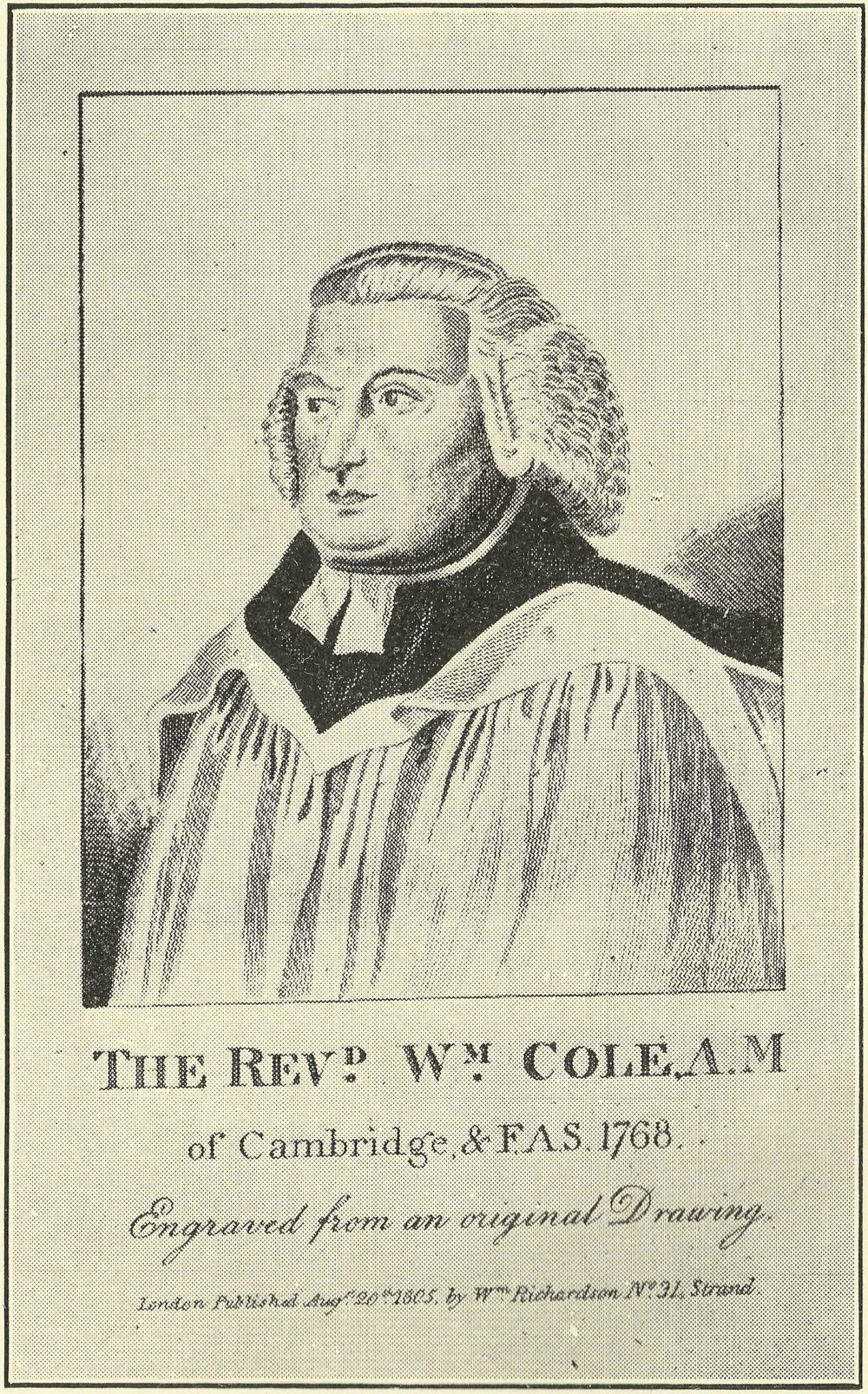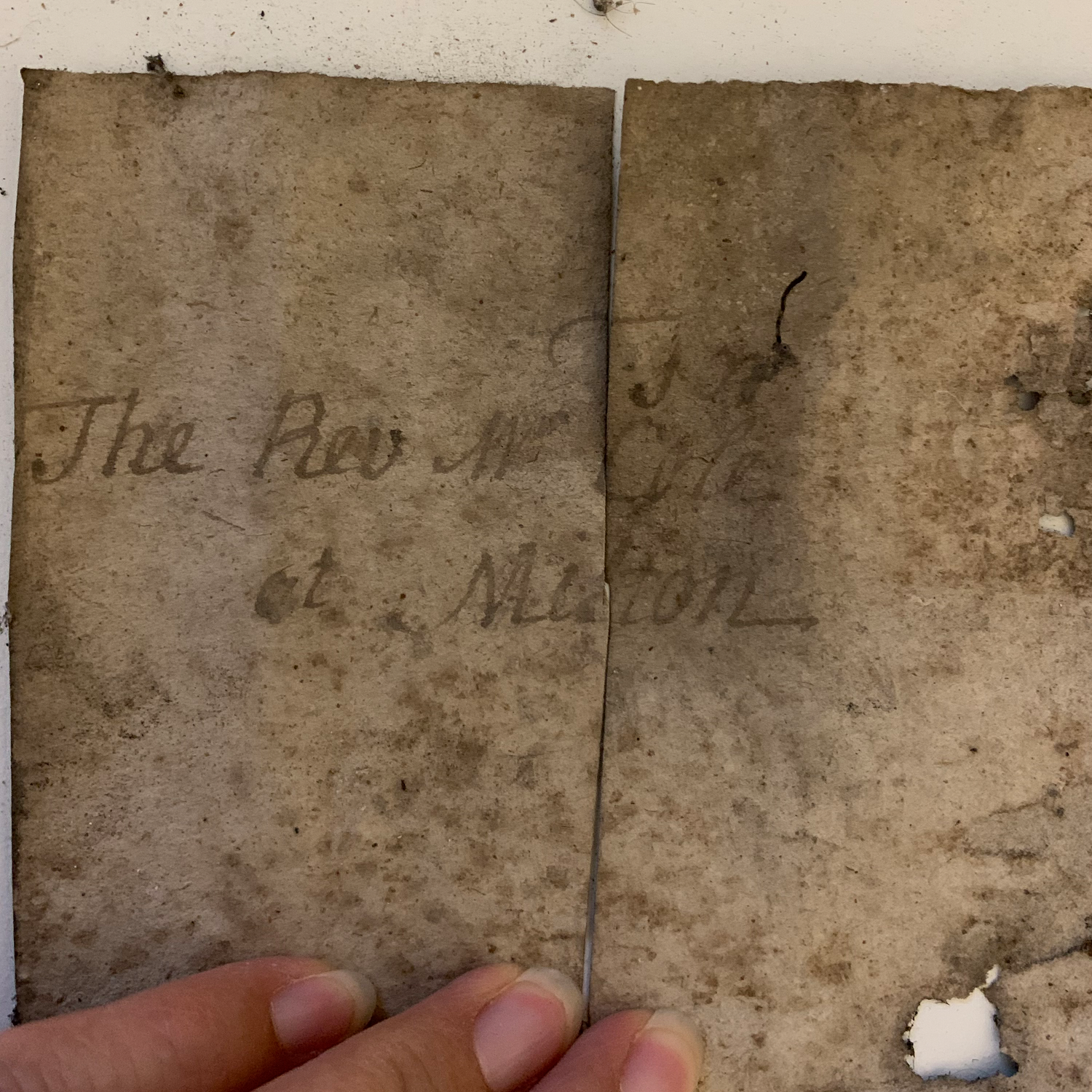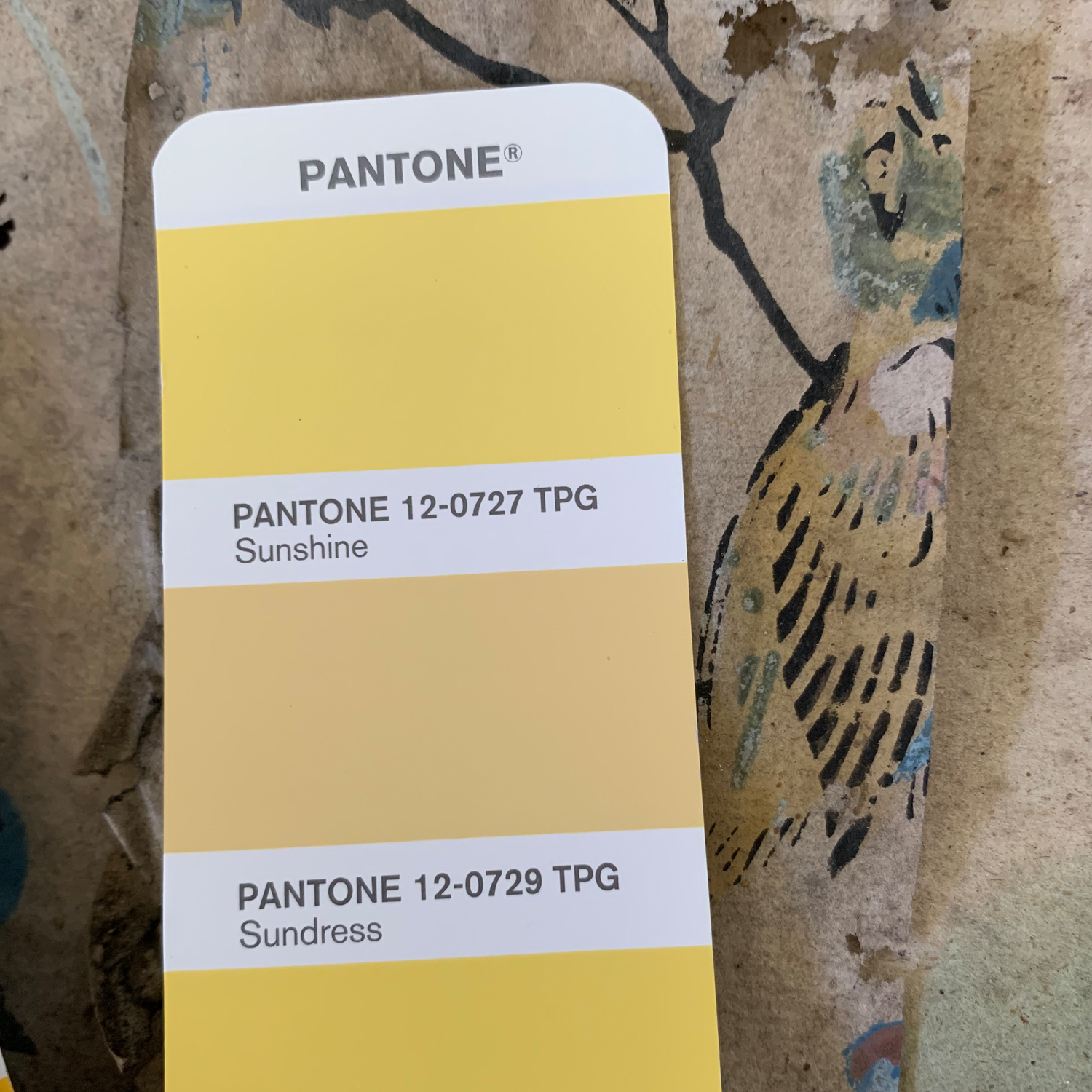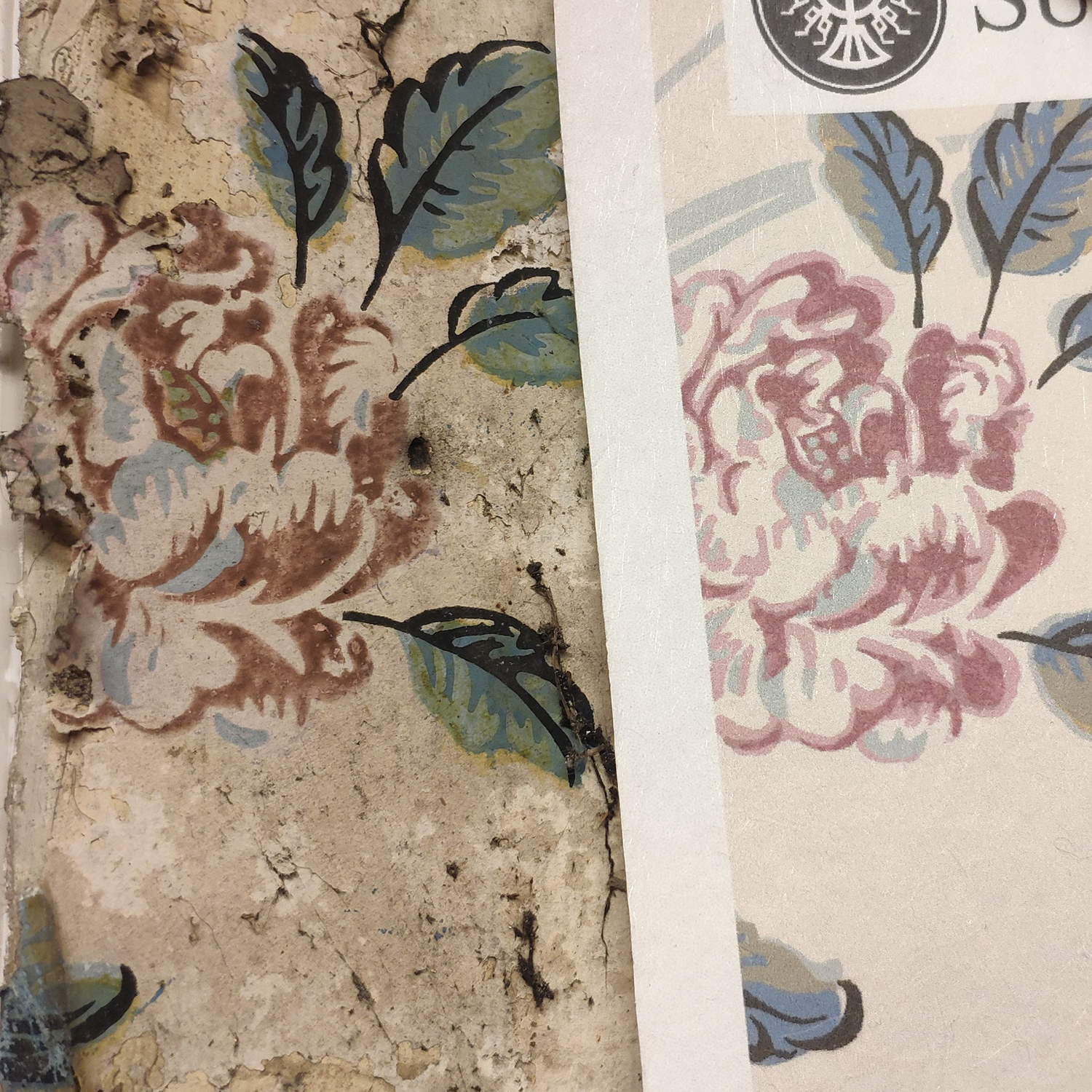Milton House Wallpaper Redesign
In July 2020, I received a lovely email from a woman named Karena, living in Cambridge. She had discovered my textile design work and emailed me with a question regarding some old wallpaper she had discovered in her home. Karena asked whether I could help redesign the paper, based on what was left. As a designer, this is a dream project! I did not hesitate to respond, and with some social distancing, we managed to meet at her home.
The house itself is a listed seventeenth-century house in Milton, Cambridgeshire, which was owned and renovated by Rev. William Cole (1714-1782) between 1770-82. A reverend of King’s College, he was also an antiquarian, known for having a special affinity for period architectural pieces, which he often salvaged for his own home collection. The house includes Tudor wood paneling in the extended gallery hall and reused medieval limestone with original carvings. It is wonderfully crooked and set at different levels from the many years of being added onto. In his diaries, Cole mentions his friendship with Horace Walpole of Strawberry Hill. I wonder if he had an influence on Cole’s antiquarian interests.
For Karena and her husband, it is their lifetime project to restore the house to its original eighteenth-century condition, so it was really an honour to be asked to work on this project. After a tour of the house, Karena led me to their sitting room and excitedly pulled a shutter closed to reveal the mystery wallpaper. There, in rare situ was a partial remnant of wallpaper clinging to the corner of the recess behind. These remnants, along with other fractured fragments, became the inspiration for the brief.
The wallpaper is a simple example of Chinoiserie; sweet yellow birds placed sparsely on delicate rose branches with decorative, rounded leaves. The light romantic colours were calling to me from under their aged, dusty, and yellowing paper. I had my fingers crossed that I was looking at an eighteenth-century wallpaper that hadn’t seen the light till now. I couldn’t wait to begin researching and creating a design to reflect its original state.
Unfortunately, I have never worked on anything so old and fragmented, so I wasn’t sure where to start my research. I contacted many libraries and museums but unfortunately because of lockdown, these resources were not open to me. However, to my great relief and gratitude, I stumbled across the Wallpaper History Society and made contact; Rowena was able to give me a lot of guidance and advice. I also contacted the incredibly talented Allyson McDermott, who was actually able to date the paper for me through close inspection of the paper quality. Based on the paper’s construction, she discovered laid lines, which shows it is handmade linen rag paper that was hand-joined. This dates it around 1760-90, which coincides to the period when William Cole lived in the house. The print technique also shows stencilled colour layers finished with a final black wood-block layer printed on top - a common print technique for eighteenth century.
Later, as I was cleaning some of the fragments, to my surprise I found a handwritten note, by the wallpaper maker noting it as an order for William Cole himself! This certainly gives some provenance to its time. And I can just imagine Cole himself making the order; I feel fortunate to have found a little ‘secret window’ back in time through my research and I can see why people enjoy restoration work, you feel connected to the past and you suddenly realise no one else has seen this for hundreds of years!
I managed to clean a number of the fragments and started piecing them together, I fortunately managed to match quite a tall and narrow area of the design. This made me realise, it was up to me to fill in the gaps and make a natural-looking repeat. As this was my first wallpaper that I had to figure out how to produce, I decided to not have too much creative agency and referenced as much as the original as possible to keep the design simple. Drawing on existing elements, I created additional elements of the rose flowers, grasses, birds and leaves to complete the design. I also referenced a lot of 18th C wallpaper designs to try and capture the style of the century.
In a dream scenario, I would have pushed to have this wallpaper traditionally printed by screens, as it would have created a more realistic interpretation of the original stenciled and wood-blocked wallpaper. However, as this was on budget with a minimum order, I had to go the digital-printed route. I collaborated with Surface Print to produce the wallpaper. They sent me different samples of wallpaper to print on, and I chose a natural-looking wallpaper sample that was as close to the original laid paper as possible. For the artwork, I separated the colours and offset some of the layers in the design as if it was screen printed itself and I also tried to keep some of the distressed textures from the stencil to give it more life.
My initial wallpaper strike off ended up being too blue and incorrect with colour tones, but after a few strike-offs we got it to a place where both the client and myself approved. Karena and James, unfortunately, have not had time to redecorate their living room, but they have placed some of the wallpaper in James’ study. We also made a tighter textile repeat, and digitally printed the design on eco-friendly Panama cotton with RA Smart. I then worked with Linda who is a lovely local sewer in Somerset, and she made cushions with subtle matching coloured piping. We also ordered more fabric to potentially upholster an armchair!
I am so happy that they have utilized the design in this way and it has been such a privilege to work on this lovely project. This has given me the fire to hopefully work on more restoration-style projects and also produce my own wallpaper range, so watch this space!

























